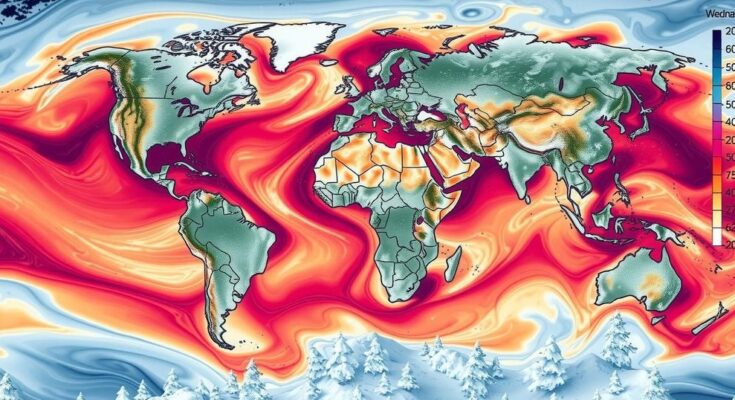The 2023/2024 El Niño, one of the strongest recorded, has impacted over 60 million people worldwide. Significant droughts and widespread flooding occurred, particularly in Central America, Southern Africa, and the Philippines. The event intensified existing humanitarian crises, resulting in severe food insecurity and health threats, especially for vulnerable populations. Immediate intervention is required to address these complex challenges.
The El Niño phenomenon of 2023/2024, classified as one of the five strongest episodes recorded, exhibited temperature anomalies that exceeded average levels in the Pacific Ocean by 2°C. This phenomenon emerged as a significant catalyst for extreme weather occurrences between September 2023 and May 2024, as indicated by the World Weather Attribution report. Droughts have severely afflicted regions including Central America, Colombia, Papua New Guinea, and several nations across Southern Africa, with ongoing repercussions. Simultaneously, widespread flooding impacted countries such as Brazil, Dubai, and parts of East Africa, demonstrating the extensive reach of this climatic event.
The consequences of El Niño were particularly dire, with over 60 million individuals affected globally, most notably in vulnerable communities that were already reeling from the combined pressures of climate change, socio-economic instability, and conflict. Southern Africa faced immense challenges, with upwards of 30 million people severely impacted by droughts leading to significant food insecurity. In Eastern Africa, approximately 5 million individuals were displaced due to flooding, while in the Philippines, drought conditions afflicted over 4 million people. Massive floods in Brazil impacted more than 2 million individuals, exacerbating the humanitarian crisis.
The repercussions of El Niño extended beyond immediate food insecurity, with overlapping adversities further intensifying the struggles faced by the affected populations. Regions that experienced flooding saw a surge in disease outbreaks, notably cholera and malaria, while protection risks heightened, particularly for women and children, who disproportionately experienced displacement and gender-based violence. The socio-economic instability in these regions has disrupted livelihoods and social structures, leading to a complex humanitarian landscape that necessitates immediate and substantial intervention.
El Niño, part of the El Niño Southern Oscillation, is characterized by the warming of the Pacific Ocean waters, which significantly influences global weather patterns. The 2023/2024 episode is noted for its exceptional intensity, ranking among the strongest events recorded. This climatic shift has profound effects, often leading to drastic weather fluctuations including severe droughts and intense flooding across various regions, and exacerbates existing vulnerabilities within communities already facing challenges due to economic instability and climate change.
The El Niño episode of 2023/2024 has had far-reaching implications, affecting over 60 million people across multiple continents. The phenomenon has exacerbated existing vulnerabilities in regions already struggling with socio-economic challenges, leading to crises in food security, health, and human rights. A comprehensive understanding of these impacts is essential for effective disaster response and mitigation strategies tailored to the specific needs of affected communities.
Original Source: reliefweb.int




